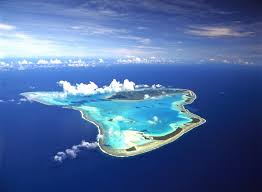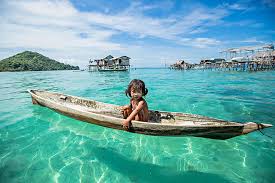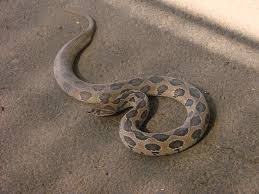Today’s Current Affairs: 19th June 2025 for UPSC IAS exams, State PSC exams, SSC CGL, State SSC, RRB, Railways, Banking Exam & IBPS, etc
Table of Contents
Captain James Cook:

After 250 years, the long-lost ship of Captain James Cook, HMS Endeavour, has finally been discovered off the coast of Newport Harbour, Rhode Island.
- James Cook (1728-1779) was a British naval captain, navigator, and explorer.
- James Cook was born on October 27, 1728, in Marton, Yorkshire, England.
- At age 18 he became a sailor on the North Sea. While ashore, he studied mathematics.
- In 1755 Cook joined the British Royal Navy. He was promoted quickly and took command of a ship at age 29.
- He took part in several battles in what is now Canada during the French and Indian War.
- After the war he charted the coast of Newfoundland.
- He sailed the seaways and coasts of Canada (1759 and 1763–67) and conducted three expeditions to the Pacific Ocean (1768–71, 1772–75, and1776–79), ranging from the Antarctic ice fields to the Bering Strait and from the coasts of North America to Australia and New Zealand.
- In 1766 he wrote a paper about an eclipse of the Sun that won him fame as a scientific observer.
- Three Voyages of Discovery:
- The First Voyage:
- In 1768 the Royal Society of London, an organization of scientists, asked Cook to lead the first scientific expedition to the Pacific Ocean.
- Cook’s expedition charted New Zealand. It also reached the southeastern coast of Australia in 1770.
- Cook named the continent New South Wales and claimed it for Great Britain. He returned to England the following year.
- The Second Voyage:
- Between 1772 and 1775, Cook went around the world from west to east, seeking to discover another southern continent.
- Cook did not reach Antarctica, but he did become the first European to cross the Antarctic Circle. He also discovered and mapped many island groups.
- The Third Voyage:
- In 1776 Cook set out in search of a Northwest Passage from the Pacific to the Atlantic across the top of North America.
- He did not succeed, but he did become the first European to visit the Hawaiian Islands.
- Revisiting the islands on his way back from the Arctic, Cook was killed by Hawaiians.
- He died on February 14, 1779.
- The First Voyage:
Reverse Flipping:

The SEBI recently announced a slew of measures to ease the compliance burden in the stock market ecosystem, encourage more companies to list on the bourses after reverse flipping to India, and facilitate greater foreign fund flows into government bonds.
- Flipping, or ‘externalised structure,’ refers to the process of transferring entire ownership of an Indian entity to an entity incorporated abroad along with the transfer of key assets, like intellectual property, to a foreign entity despite having most of their market, personnel, and founders in India.
- This results in the Indian company becoming a wholly owned subsidiary of the foreign company, with its day-to-day operations in India.
- Many Indian start-ups have previously adopted the flipping strategy, primarily because of the taxation benefits that some of the foreign countries offer. These include Singapore, the UAE, the Cayman Islands, the United Kingdom, and the United States.
- Some other reasons why companies flip are to access the capital markets, higher valuations, branding and reach, and a more protective intellectual property environment.
- Reverse flipping, or ‘internalisation,’ is the practice where a foreign entity-owned start-up shifts its domicile back to India.
- The primary reason for start-ups to flip back is to potentially get listed on Indian stock exchanges, attracting interested retail investors to invest in startup shares.
- Some other reasons why start-ups are considering reverse flipping to India are the country’s robust economic policies, expanding local market, and growing investor confidence in its startup ecosystem.
- There are various structures for executing the reverse flip, depending on the size, location and nature of the firm. Choosing the right structure for a reverse flip is critical for a start-up, as it impacts legal, regulatory, and tax considerations.
- Inbound Merger’ and ‘Share Swap Arrangement’ are the two most used structures to execute a reverse flip.
Cook Islands:

New Zealand recently suspended millions of dollars in budget funding to the Cook Islands, as the relationship between the two constitutionally linked countries continues to deteriorate amid the island group’s deepening ties with China.
- The Cook Islands are a group of 15 small islands that are spread over 2 million sq. km in the South Pacific Ocean.
- The islands are situated in the center of the Polynesian Triangle–about halfway between Hawaii and New Zealand.
- The Cook Islands are located to the east of Niue, Tonga, and Samoa; to the northeast of New Zealand; to the south of Kiribati and to the west of French Polynesia.
- Named after Captain Cook, who explored them in 1773, the islands were once autonomous, home to tribes of mixed Polynesian ancestry.
- The islands cover a total land area of 240 sq. km.
- They are divided into a northern group of six islands and a southern group of nine islands.
- Northern Islands: These are mostly low-lying and sparsely populated coral atolls; and include the islands of Manihiki, Nassau, Penrhyn, Pukapuka, Rakahanga, and Suwarrow and are covered in light vegetation and equipped with stunning white sand beaches.
- Southern islands: These generally consist of much larger, higher islands that are volcanic in origin and more densely populated.
Operation Sindhu:

India recently announced launching ‘Operation Sindhu’ to evacuate Indian nationals from Iran as fears of an all-out Israeli-American military strike on Iran increased.
- Operation Sindhu was launched by the Government of India to evacuate Indian nationals from Iran in view of the deteriorating situation as a result of the ongoing conflict between Iran and Israel.
- More than 10,000 Indians are currently in Iran, including around 6,000 students.
- In the first phase of the operation, 110 Indian students from northern Iran were successfully evacuated and transported by road to Yerevan, Armenia, under the supervision of Indian Missions in Iran and Armenia .
- The Indian embassy in Tehran, together with the mission in Armenia, has been actively relocating citizens from high-risk areas within Iran to safer zones while coordinating further evacuation efforts via all available routes.
- To oversee and support the operation, the government has established a 24×7 Control Room in New Delhi to monitor the situation and provide assistance to affected nationals.
- Additionally, the Embassy of India in Tehran has set up its own 24×7 emergency helpline to assist citizens on the ground.
- Additional phases of Operation Sindhu are anticipated to proceed as developments occur.
Bajau Tribe:

Research has revealed that the Bajau’s spleens are, on an average, 50% larger than those of the general population, a natural adaptation that allows them to live longer and deep diver.
- The Bajau, also called the Sea Gypsies or Sea Nomads, come from the Sulu Islands region in the Southern Philippines.
And because of their nomadic sea life, this tribe eventually spread into the waters of Malaysia, Brunei, and Indonesia. - The Bajau are renowned for their extraordinary free-diving abilities.
- Without using modern diving gear, they can dive to depths of 20–30 metres and hold their breath for five to 13 minutes.
- Bajau have spleens that are, on average, 50% larger than those of ordinary people, a natural adaptation that enables them to dive deeper and longer.
- Scientists have traced this adaptation to a variation in the PDE10A gene.
- People of the Bajau Tribe live in wooden pole houses and houseboats called Lepa-Lepa. Their activities are mostly carried out on the boat.
- Following seasonal changes, they move between islands, entirely dependent on the sea for food, income, and daily needs.
- Fishing remains central to their lifestyle and is a strong reflection of their cultural heritage. Communal fishing activities help preserve traditional practices and strengthen social bonds.
Russell’s Viper:

Studies carried out in mice have demonstrated that two approved drugs — varespladib and marimastat — were effective in countering systemic and lethal effects of Russell’s viper (Daboia russelii) venom either individually or in combination.
Highlight of the study:
- Phospholipase A2(PLA2), and Snake Venom Metalloproteinase (SVMPs) are two main components of Russell’s viper snake venom.
- These toxins interfere with components of the blood clotting cascade to induce anticoagulant and haemorrhagic effects in humans. While the varespladib drug inhibits PLA2, the marimastat drug inhibits SVMP.
- The PLA2 inhibitor varespladib was found to neutralise even the high PLA2 activity of the venom found in Tamil Nadu and Punjab.
- The varespladib drug effectively inhibited the modest PLA2 activity of the venom from other Indian regions.
Russell’s Viper:
- It is a highly venomous terrestrial snake of the family Viperidae found in Asia.
- It is one of the big four snakes (deadliest snakes) in India, the others being the Common krait (Bungarus caeruleus), the Indian Cobra (Naja naja) and the Saw-scaled viper (Echis carinatus).
- Russell’s vipers are responsible for over half of India’s snakebite cases.
- They tend to avoid dense forests.
- They are mostly found in open, grassy, or bushy areas, but may also be found in second-growth forests (scrub jungles), on forested plantations, and on farmland.
- It is found in India, Sri Lanka, Bangladesh, Nepal, Myanmar, Thailand, Pakistan, Cambodia, Tibet, China (Guangxi, Guangdong), Taiwan, and Indonesia.
- The snake can grow up to 1.5 meters and is identified by its distinctive reddish-brown spots outlined in black and white.
- It has a wide, triangular head with small, overlapping scales, large nostrils, and small eyes with vertical pupils.
- It is mainly nocturnal, becoming active as the sun fades.
- These snakes are quite sedentary, often staying in one place for several days unless disturbed.
- Conservations Status: IUCN Red List: Least Concern
Sustainable Cities Integrated Pilot Approach Project:

Guntur in Andhra Pradesh, has embraced an eco-friendly transformation in waste management by deploying over 200 electric autos for door-to-door garbage collection which is supported by the Sustainable Cities Integrated Pilot Approach (SCIAP) project.
- The project aims to address UN-Habitat’s commitments to support the Government of India in promoting sustainable urban planning and management, integrating urban infrastructure and service delivery in cities.
- It aids 28 cities from 11 countries to address the challenges posed by megatrends of global environmental degradation, in an integrated manner.
- The primary objective is to foster an environment conducive to investments in green infrastructure.
- These investments are intended to decrease greenhouse gas emissions, enhance service delivery, and improve the overall quality of life for citizens.
- It is being implemented by the United Nations Industrial Development Organization (UNIDO) with funding assistance from the Global Environment Facility (GEF) and in close cooperation with the Ministry of Housing and Urban Affairs.
- The implementation of the project is underway in five pilot cities – Bhopal, Guntur, Mysore, Vijayawada, and Jaipur.
Fourier Transform InfraRed Spectroscopy:

Atmospheric science experts from across the world congregated at Nainital, Uttarakhand discussed the the importance of Fourier Transform InfraRed (FTIR) spectroscopy-based observations from ecologically sensitive Himalayan regions for studies on the topic.
- Fourier Transform InfraRed Spectroscopy is also known as FTIR Analysis or FTIR Spectroscopy.
- It is a powerful analytical tool for identifying chemical constituents and elucidating compound structures in various real-world samples.
- It does this by analyzing the vibrational modes of molecular functional groups.
- The FTIR analysis method uses infrared light to scan test samples and observe chemical properties.
- It gives information about molecular vibrations, provides identification of functional groups and also identifies chemical components, molecules and molecular segments.
- This technique is useful for analyzing the chemical composition of smaller particles, typically 10 -50 microns, as well as larger areas on the surface.
- It is an established technique for quality control when evaluating industrially manufactured material.
- It is used for monitoring air quality, testing water quality, and analyzing soil to address environmental and health concerns caused by increasing pollution levels.
- It is used to identify organic, polymeric, and, in some cases, inorganic materials.
ICRA Predicts 6.2% GDP Growth for India in FY26:
ICRA has projected India’s real GDP growth for FY2025–26 to dip slightly to 6.2%, down from 6.5% in FY2024–25, citing a slowdown in merchandise exports and continued uncertainty in global trade dynamics. However, strong rural demand, supportive fiscal measures, and higher capital expenditure are expected to sustain economic momentum despite headwinds.The ICRA forecast, released on June 18, 2025, offers a key insight into India’s evolving macroeconomic scenario for FY26. It draws attention due to A revised GDP growth projection below the previous fiscal Changing dynamics in inflation, fiscal deficit, and external trade, Strong rural resilience amid global slowdown, Implications for budgetary policy and investment planning.
Anantha Chandrakasan Becomes First Indian-Born Provost of MIT:
The Massachusetts Institute of Technology (MIT) has appointed Professor Anantha Chandrakasan as its next Provost, making him the first Indian-born academician to hold the prestigious position. A pioneer in electrical engineering and computer science, Chandrakasan will take charge on July 1, 2025, succeeding Cynthia Barnhart. In this role, he will guide MIT’s academic affairs, financial planning, and strategic initiatives.
Sahitya Akademi Yuva Puraskar 2025:
The Sahitya Akademi, India’s national academy of letters and an autonomous organization under the Ministry of Culture, Government of India, has made a landmark announcement recognizing the extraordinary contributions of young writers to Indian literature. Under the esteemed leadership of Sri Madhav Kaushik, President of the Sahitya Akademi, the Executive Board convened to finalize the recipients of the prestigious Yuva Puraskar 2025
List Of Winners:
Language: Name Of books: Awardee Name
- Assamese : Kushiyarama (Short Stories): Supraksam Bhuyan
- Bengali : Ekadha Chinish Toliami (Poetry) : Sudeshna Moitra
- Bodo : Ang Aisu (Poetry) : Amar Khungur Boro
- English : Siddhartha – The Boy Who Became the Buddha (Novel) : Advait Kolarkar
- Gujarati : Naranch Tekari (Essays) : Mayur Kharadi
- Hindi : Phir Ugna (Poetry) : Parvesh Yadav
- Kannada : Paccheya Jagat (Criticism) : R. Deepkumar
- Kashmiri : Harfas Harfas Zaagi (Criticism) : Saiba Sehar
- Konkani : Gaavgaamhas (Short Stories) : Glynis Dias
- Maithili : Banaras Aa Hum (Poetry): Neha Jha Maini
- Malayalam : Ram Oru Anandhi (Novel) : Akhil P. Dharmajan
- Manipuri : Khoyum Nongdan Coy (Epic) : A. K. Jiten
- Marathi : Khel Khel Dukhana Dele (Novel) : Pradeep Kokane
- Nepali : Junko Aansu (Poetry) : Subash Thakuri
- Odia : Kademsabana (Short Stories): Subrat Kumar Senapati
- Punjabi : Girka Hostel (Poetry) : Mandeep Aulakh
- Rajasthani : Ankhs ni sangmat (Poetry) : Poonam Chand Godara
- Sanskrit : Panchbhautikshahol-swavasyam (vedantdarshanhsaraviseshathe) (Criticism) : Dhiresna Kumar Pandey
- Santali : Ara Sajo te (Poetry) : Fagui Baaskey
- Sindhi : Pandhyado (Poetry) : Manjham Bachani
- Tamil : Kuttaaru Kuthuvi (Short Stories) : Latarhinhar
- Telugu: Maralawatha (Novel) : Prasad Suri
- Urdu : Maulard Haqeqat, Thereek-e-Azadi, or Hindi Jihad Ka Farmonsuti Kardah Qasaid (Novel) : Neetu Rubabi
Padma Bhushan Conferred on Veteran Journalist Ram Bahadur Rai:
Eminent journalist and cultural intellectual Shri Ram Bahadur Rai was formally presented the Padma Bhushan, India’s third-highest civilian award, by the Ministry of Home Affairs. The special presentation took place at the Indira Gandhi National Centre for the Arts (IGNCA) office in Delhi, as Shri Rai was unable to attend the main ceremony at Rashtrapati Bhavan. The award ceremony witnessed the presence of prominent dignitaries and intellectuals who paid heartfelt tributes to his lifelong contributions to journalism, public discourse, and cultural thought.
Centre Approves ₹2,006.40 Crore Assistance to Himachal Pradesh for 2023 Disaster Recovery:
Himachal Pradesh’s post-disaster recovery efforts, the central government has approved ₹2,006.40 crore for reconstruction and rehabilitation in the wake of devastating floods, landslides, and cloudbursts during the 2023 monsoon. The assistance will be provided under the National Disaster Response Fund (NDRF) and was cleared by a high-level committee chaired by Union Home Minister Amit Shah.The Union Government has approved a ₹2,006.40 crore recovery plan for Himachal Pradesh. The aid is meant to support reconstruction after severe natural disasters that struck during July–August 2023. Over 550 lives were lost, and extensive damage to infrastructure was recorded.
India Ranks 71st in WEF Energy Transition Index 2025:
India has slipped to 71st position in the World Economic Forum’s (WEF) Energy Transition Index 2025, falling eight places from last year. The index, which ranks 118 countries based on their performance across energy security, sustainability, and equity, places Sweden, Finland, and Denmark at the top. While India’s ranking declined, the WEF acknowledged the country’s significant improvements in energy access, regulatory frameworks, and transition readiness.The World Economic Forum (WEF) released its annual Energy Transition Index (ETI). India ranked 71st, down from 63rd in 2024, even as it made notable improvements in energy investment capacity and efficiency. The report emphasizes the growing influence of top economies—India, China, US, EU, and Japan—in shaping the global energy transition.




